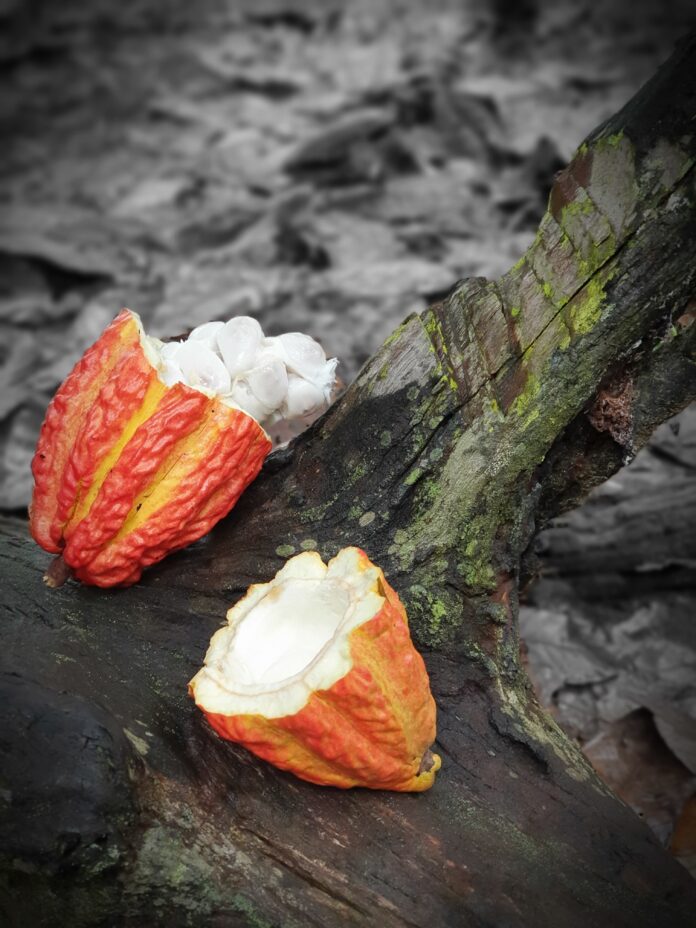Ceremonial Cacao, often referred to as sacred cacao, is a powerful and ancient plant medicine that has been used by indigenous cultures for thousands of years. This ceremonial-grade cacao is distinct from the regular cocoa powder or chocolate that we commonly consume. It is sourced from specific strains of cacao beans, which are carefully selected, harvested, and processed to preserve their natural properties and energetic qualities. Ceremonial Cacao has gained popularity in recent years as a tool for healing, spiritual exploration, and inner transformation. In this article, we will delve into the world of Ceremonial Cacao, exploring its origins, benefits, preparation, and its significance in ceremonial practices.
Ceremonial Cacao, Ceremonial Cacao, Ceremonial Cacao. These words evoke a sense of reverence and intrigue, offering a glimpse into the profound experiences that can unfold through its ceremonial use. The practice of working with Ceremonial Cacao has deep roots in Mesoamerican cultures, particularly among the Maya and Aztec civilizations. These ancient civilizations considered cacao to be a sacred gift from the gods, valuing its medicinal and spiritual properties.
1. Origins and History:
Ceremonial Cacao has its origins in Mesoamerica, where cacao trees (Theobroma cacao) are native to the tropical regions of Central and South America. The Mayans and Aztecs revered cacao as a sacred plant, associating it with deities and using it in religious ceremonies, rituals, and offerings. Cacao was so highly regarded that it was often referred to as “The Food of the Gods.” The beans were used as currency and consumed as a beverage in sacred rituals, celebrations, and even as a symbol of fertility and abundance.
2. Nutritional and Energetic Properties:
Ceremonial Cacao is not only valued for its rich cultural history but also for its unique nutritional and energetic properties. The cacao beans used in ceremonial-grade cacao are minimally processed, ensuring that they retain their natural abundance of antioxidants, minerals, and vitamins. It contains compounds like theobromine, which provides a gentle and sustained energy boost, and anandamide, often referred to as the “bliss molecule,” known to promote feelings of joy and well-being. Additionally, Ceremonial Cacao is rich in magnesium, which helps relax muscles and support a calm state of mind.
3. Healing and Transformational Benefits:
One of the most significant aspects of Ceremonial Cacao is its potential for healing and transformation. The energetic properties of the cacao combined with the intentional ceremonial use create a powerful catalyst for inner work. Ceremonial Cacao is often used as a heart-opening medicine, supporting emotional healing, and facilitating a deeper connection with oneself and others. It can enhance self-awareness, promote self-acceptance, and create a space for personal insights and breakthroughs. Many people report experiencing a sense of clarity, increased creativity, and heightened intuition during Ceremonial Cacao rituals.
4. Preparation and Ceremony:
To harness the full potential of Ceremonial Cacao, it is essential to prepare and consume it with intention and reverence. The preparation process usually involves gently heating water or plant-based milk and adding finely ground ceremonial-grade cacao. The mixture is then stirred or blended until a frothy and velvety beverage is achieved. During the ceremony, participants typically gather in a sacred space, set intentions, and drink the cacao mindfully. Music, chanting, meditation, and other ceremonial practices may accompany the cacao experience, creating a transformative and heart-centered journey.
5. Ethical and Sustainable Sourcing:
As the popularity of Ceremonial Cacao grows, it is important to consider the ethical and sustainable sourcing of the cacao beans Ceremonial Cacao, often referred to as sacred cacao, is a powerful and ancient plant medicine that has been used by indigenous cultures for thousands of years. This ceremonial-grade cacao is distinct from the regular cocoa powder or chocolate that we commonly consume. It is sourced from specific strains of cacao beans, which are carefully selected, harvested, and processed to preserve their natural properties and energetic qualities. Ceremonial Cacao has gained popularity in recent years as a tool for healing, spiritual exploration, and inner transformation.
Ceremonial Cacao, Ceremonial Cacao, Ceremonial Cacao. These words evoke a sense of reverence and intrigue, offering a glimpse into the profound experiences that can unfold through its ceremonial use. The practice of working with Ceremonial Cacao has deep roots in Mesoamerican cultures, particularly among the Maya and Aztec civilizations. These ancient civilizations considered cacao to be a sacred gift from the gods, valuing its medicinal and spiritual properties.
Ceremonial Cacao has its origins in Mesoamerica, where cacao trees (Theobroma cacao) are native to the tropical regions of Central and South America. The Mayans and Aztecs revered cacao as a sacred plant, associating it with deities and using it in religious ceremonies, rituals, and offerings. Cacao was so highly regarded that it was often referred to as “The Food of the Gods.” The beans were used as currency and consumed as a beverage in sacred rituals, celebrations, and even as a symbol of fertility and abundance.
Ceremonial Cacao is not only valued for its rich cultural history but also for its unique nutritional and energetic properties. The cacao beans used in ceremonial-grade cacao are minimally processed, ensuring that they retain their natural abundance of antioxidants, minerals, and vitamins. It contains compounds like theobromine, which provides a gentle and sustained energy boost, and anandamide, often referred to as the “bliss molecule,” known to promote feelings of joy and well-being. Additionally, Ceremonial Cacao is rich in magnesium, which helps relax muscles and support a calm state of mind.
One of the most significant aspects of Ceremonial Cacao is its potential for healing and transformation. The energetic properties of the cacao combined with the intentional ceremonial use create a powerful catalyst for inner work. Ceremonial Cacao is often used as a heart-opening medicine, supporting emotional healing, and facilitating a deeper connection with oneself and others. It can enhance self-awareness, promote self-acceptance, and create a space for personal insights and breakthroughs. Many people report experiencing a sense of clarity, increased creativity, and heightened intuition during Ceremonial Cacao rituals.
To harness the full potential of Ceremonial Cacao, it is essential to prepare and consume it with intention and reverence. The preparation process usually involves gently heating water or plant-based milk and adding finely ground ceremonial-grade cacao. The mixture is then stirred or blended until a frothy and velvety beverage is achieved. During the ceremony, participants typically gather in a sacred space, set intentions, and drink the cacao mindfully. Music, chanting, meditation, and other ceremonial practices may accompany the cacao experience, creating a transformative and heart-centered journey.
As the popularity of Ceremonial Cacao grows, it is important to consider the ethical and sustainable sourcing of the cacao beans. Supporting fair trade practices and working directly with cacao farmers who cultivate cacao in a way that respects the environment and the rights of local communities ensures that the journey from bean to cup is aligned with the values of reverence and sustainability. By choosing ethically sourced Ceremonial Cacao, we contribute to the preservation of indigenous traditions, biodiversity, and the livelihoods of cacao-growing regions.
Furthermore, Ceremonial Cacao offers an opportunity to reconnect with nature and honor the interconnectedness of all living beings. By choosing cacao that is grown using sustainable and regenerative farming practices, we can support ecosystems and contribute to the preservation of biodiversity. Ethical sourcing also emphasizes fair compensation for farmers, empowering them to continue their ancestral traditions and maintain their way of life.
It is important to note that Ceremonial Cacao is not a panacea or a substitute for professional medical or psychological support. While it can facilitate deep personal experiences, it is essential to approach its ceremonial use with respect and caution. It is advisable to seek guidance from experienced facilitators or practitioners who can provide a safe and supportive space for the cacao journey.
So, the next time you encounter the words “Ceremonial Cacao,” let them serve as a reminder of the ancient wisdom and sacred connection that this plant medicine holds. Embrace the opportunity to embark on a journey of self-discovery, healing, and spiritual exploration. Honor the cacao, honor yourself, and honor the interconnected web of life that binds us all. With each sip of Ceremonial Cacao, allow yourself to be transported to a place of reverence, love, and transformation. May your journey with Ceremonial Cacao be one of deep meaning and awakening.
In conclusion, Ceremonial Cacao holds a rich history and profound significance as a sacred plant medicine. Its origins in Mesoamerican cultures and its ceremonial use by indigenous peoples highlight its deep-rooted spiritual and healing properties. Ceremonial Cacao offers an opportunity for self-reflection, emotional healing, and transformation when approached with intention and reverence. By choosing ethically sourced ceremonial-grade cacao, we not only support the preservation of ancestral traditions but also contribute to a sustainable and regenerative future.














